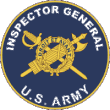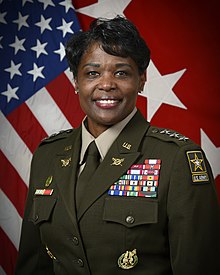
The North Carolina Line refers to North Carolina units within the Continental Army. The term "North Carolina Line" referred to the quota of infantry regiments assigned to North Carolina at various times by the Continental Congress. These, together with similar contingents from the other twelve states, formed the Continental Line. The concept was particularly important in relation to the promotion of commissioned officers. Officers of the Continental Army below the rank of brigadier general were ordinarily ineligible for promotion except in the line of their own state.

Sylvester Churchill was an American journalist and Regular Army officer.

The Surgeon General of the United States Army is the senior-most officer of the U.S. Army Medical Department (AMEDD). By policy, the Surgeon General (TSG) serves as Commanding General, U.S. Army Medical Command (MEDCOM) as well as head of the AMEDD. The surgeon general's office and staff are known as the Office of the Surgeon General (OTSG) and are located in Falls Church, Virginia.

The Department of the Gulf was a command of the United States Army in the nineteenth and early twentieth centuries and of the Confederate States Army during the Civil War.

Thomas Humphrey Cushing was an officer in the Continental Army, and later the United States Army, and finally became a collector of customs for the port of New London, Connecticut.
Abimael Youngs Nicoll was an officer in the United States Army who served as Adjutant General and acting Inspector General of the U.S. Army from 1807 to 1812.
Morgan Connor was an officer in the Continental Army who served as Adjutant General in 1777.
Henry De Butts was an officer in the United States Army who served as acting Adjutant General and acting Inspector General of the U.S. Army from 1792 to 1793.
Michael Rudolph (1758–1795), an officer in the United States Army, served as acting Adjutant General and acting Inspector General of the U.S. Army in 1793.
Jonathan Haskell was an officer in the United States Army who served as acting Adjutant General and acting Inspector General of the U.S. Army in 1796. After the war he returned to farm in Belpre, Ohio.
John Mills was an officer in the United States Army who served as acting Adjutant General and acting Inspector General of the U.S. Army from 1794 to 1796.

Edmund Kirby was a United States Army artillery officer who was mortally wounded at the Battle of Chancellorsville.

Virgil Lee Peterson was an Inspector General of the United States Army. Peterson graduated third in the United States Military Academy class of 1908, and much of his early career was spent in the United States Army Corps of Engineers, including serving as the district engineer of the Los Angeles District and commander of the 3rd Engineers.

The Office of the Inspector General of the United States Army (OTIG) is the agency tasked with investigating the United States Army. Its stated mission is to "provide impartial, objective and unbiased advice and oversight to the army through relevant, timely and thorough inspection, assistance, investigations, and training". The position of Inspector General (IG) has existed since 1777, when Thomas Conway was appointed, and the office has been reorganized many times, varied in size dramatically, and abolished on several occasions before being reinstated. In its early days, the inspectorate was frequently merged with, or proposed to be part of, the Adjutant General's department.

Peter D. Vroom was a career officer in the United States Army. A veteran of the American Civil War, American Indian Wars, and Spanish–American War, he served from 1862 to 1903, attained the rank of brigadier general, and was most notable for his service as Inspector General of the United States Army.











